Hi beautiful people this is your girl Tashnee.V.Mavee. Welcome back to my blog I hope you love today’s post.

My husband, my Mother-in-law and I made a trip to the Plovdiv. I had a lots of fun in Plovdiv with my mother in law. We saw beautiful things and I learned a lot about the town itself. I took wonderful pics. Plovdiv has lots of history and am glad I went there for a vacation.
Plovdiv is the second-largest city in Bulgaria, with a city population of 341,000 as of 2015 and 675,000 in the greater metropolitan area. It is an important economic, transport, cultural, and educational center. There is evidence of habitation in Plovdiv dating back to the 6th millennium BCE, when the first Neolithic settlements were established; it is said to be one of the oldest cities in Europe.
During most of its recorded history, Plovdiv was known in the West by the name Philippopolis. Plovdiv is situated in a fertile region of south-central Bulgaria on the two banks of the Maritsa River. The city has historically developed on seven syenite hills, some of which are 250 metres (820 feet) high. Because of these hills, Plovdiv is often referred to in Bulgaria as “The City of the Seven Hills”.
Plovdiv is host to a huge variety of cultural events such as the International Fair Plovdiv, the international theatrical festival “A stage on a crossroad”, the TV festival “The golden chest,” and many more novel festivals, such as Night/Plovdiv in September, Kapana Fest, and Opera Open. There are many preserved ruins such as the ancient Plovdiv Roman theatre, a Roman odeon, a Roman aqueduct, the Plovdiv Roman Stadium, the archaeological complex Eirene, and others.
Plovdiv Old Town
We first visited plovdiv old town to learn about the history and culture
This is the Roman Theatre of Plovdiv
👇👇👇👌👌
The Roman theatre of Plovdiv is one of the world’s best-preserved ancient theatres, located in the city center of Plovdiv, Bulgaria. It was constructed in the 90s of the 1st century AD, probably under the rulership of Emperor Domitian. The theatre can host between 5000 and 7000 spectators and it is currently in use.


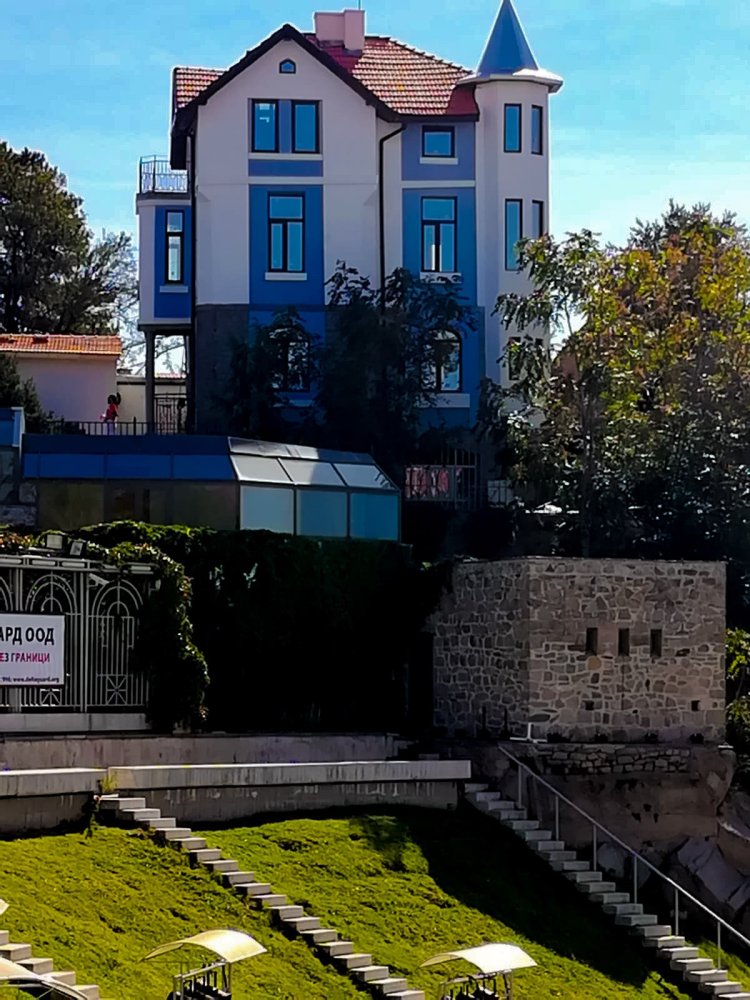
Description about Roman Theatre👇👇👇
The spectator seats are orientated to the south, towards the ancient city in the lowland and the Rhodope Mountains. In outline, the theatre is a semi-circle with an outer diameter of 82 meters. The theatre itself is divided into the seating section (auditorium) and the stage (orchestra). The auditorium, the area in which people gathered, is hollowed out of a hill or slope, while the outer radian seats required structural support and solid retaining walls. The auditorium was not roofed. The spectator seats (cavea) surround the stage – the orchestra – which has the shape of a horseshoe, 26.64 meters long, includes 28 concentric rows of marble seats, divided into two tiers by an aisle (diazoma). The upper part of the tiers is interrupted by narrow radial stairways, which divide the cavea into wedge-shaped sectors (kerkides). The theatre also has a podium, which supports the columns of the scaenae frons.
The stage building – the scaenae frons – is south of the orchestra. It has three floors and is a high wall of the stage floor, supported by columns. The proscenium is a wall that supports the front edge of the stage with ornately decorated niches off to the sides. The proscaenium, which is 3.16 meters high, and its facade is decorated with an Ionic marble colonnade with triangular pediments. The facade of the scenae, which overlooks the spectators’ area, consists of two two-storey porticos, the first in the Roman Ionic order and the second in the Roman-Corinthian order. The facade is cut through by three symmetrically located gates. The entrances to the orchestra, which are uncovered and vaulted, connect the cavea with the stage building. An underground vaulted passage begins from the centre of the orchestra, goes under the stage building and leads out of the theatre. Another vaulted passage, passing under the central bank of seats of the top tier, connects the cavea with the Three Hills area.
Similar to all the theatres on the territory of the Roman Empire, in the theatre of Trimontium the honorary spectator seats were inscribed. There were inscriptions not only for the representatives of the city council but also for magistrates, friends of the Emperor, etc. Some honorary inscriptions show that the building was used as the seat of the Thracian provincial assembly. Built with around 7,000 seats, each section of seating had the names of the city quarters engraved on the benches so the citizens knew where they were to sit.
Whereas Greeks preferred the exercises of gymnasium and stadium, Roman interest in sport went to the events at the theatre and circus. Thus, presumably, gladiatorial fights with animals were held in the theatre, as remains of safety facilities in front of the first row have been uncovered. These additions were set because of the visit of Emperor Caracalla to Trimontium in 214 AD.
The theater was damaged in the 5th century AD by Attila the Hun.
The theater was only found in the early 1970s due to a landslide. This caused a major archeological excavation, including the removal of some 4.5 m of earth covering what was left hidden by the landslide. The restoration of the Roman theatre in Plovdiv is considered one of the best achievements of the Bulgarian Conservation School. The intervention is limited on the basis of rigorous tests and exclusion of assumptions. The reconstruction was made strictly according to the method of anastylosis and the new material is clearly visible. The theatre is one of the numerous constructions from the time of the Roman Empire, preserved in Bulgaria. There are several steles and wall inscriptions in Byzantine Greek language in the theatre.
Lamartine House-Museum
The house of Georgi Mavridi (today’sLamartine House-Museum) was built in 1829 at a corner-spot of three streets, with difference in the levels.
While passing through Bulgaria in 1838, the great French poet Alphonse de Lamartine spent only three days in the house of Georgi Mavridi but that was quite enough for the house to be called more often after Lamartine’s name rather than its real owner’s. Today the house-museum hosts an exposition of photo albums, sculpture of the poet, and the map with Lamartine’s route through Bulgaria. The Lamartine House belongs to the Union of Bulgarian Writers.


Here are some pictures from the old Town plovdiv around the Roman theatre.




Look at this beautiful statue of Milio
👇👇👇👇👇👇
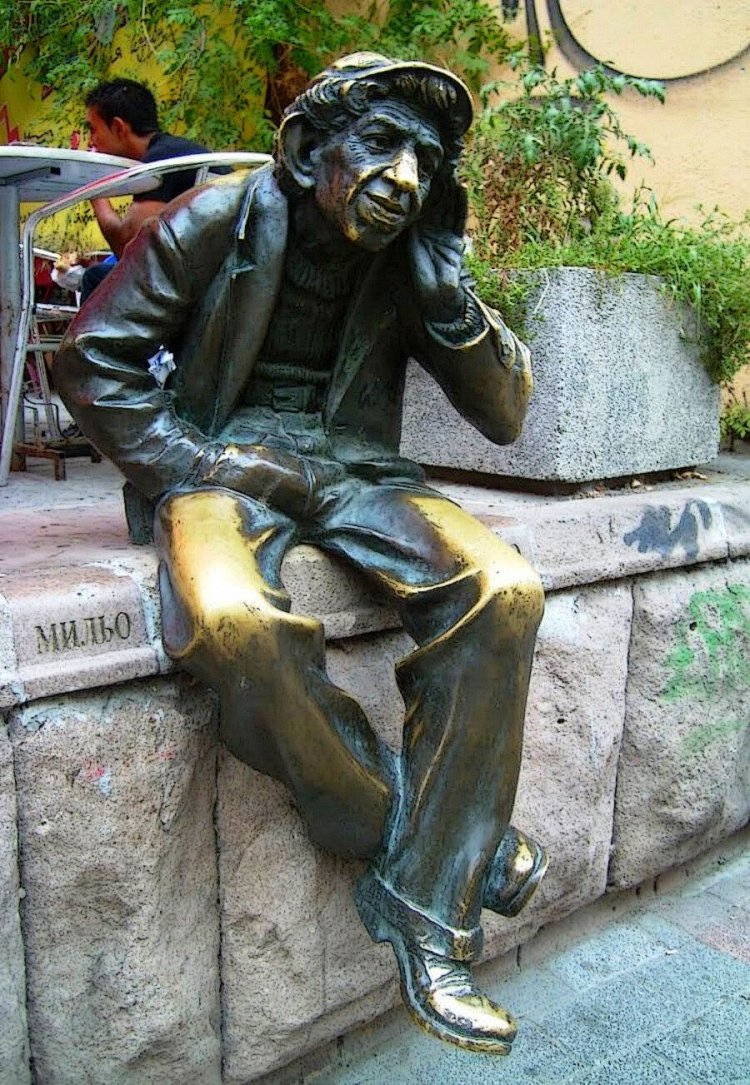
Milio is a popular, kind hearted and eccentric person from the near past of Plovdiv. Brandes by some as a “harmless crazy”, he lived in the city in the sixties and was a famous gossip. The legend goes that he knew the gossips of the whole town and told them to everyone interested (and occasionally uninterested) in them.He was a muse for several famous Bulgarian artists, most notably the world famous Zlatio Boyadjiev.
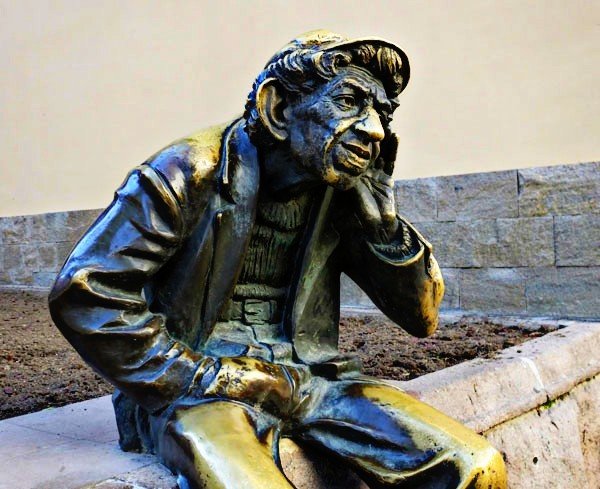
And people to remember him built a statue of him in the main street of Plovdiv. George Lazarov – a doctor who worked in the U.S. gave money for the monument of Milio. Danko Danev – the sculpture worked very hard and one day Milio bloomed on the main street of Plovdiv in full size. One arm is stuck deep in his pocket – nobody knows what this is about.
Another Beautiful Statue of Violinist statue, Hemus Ulica.
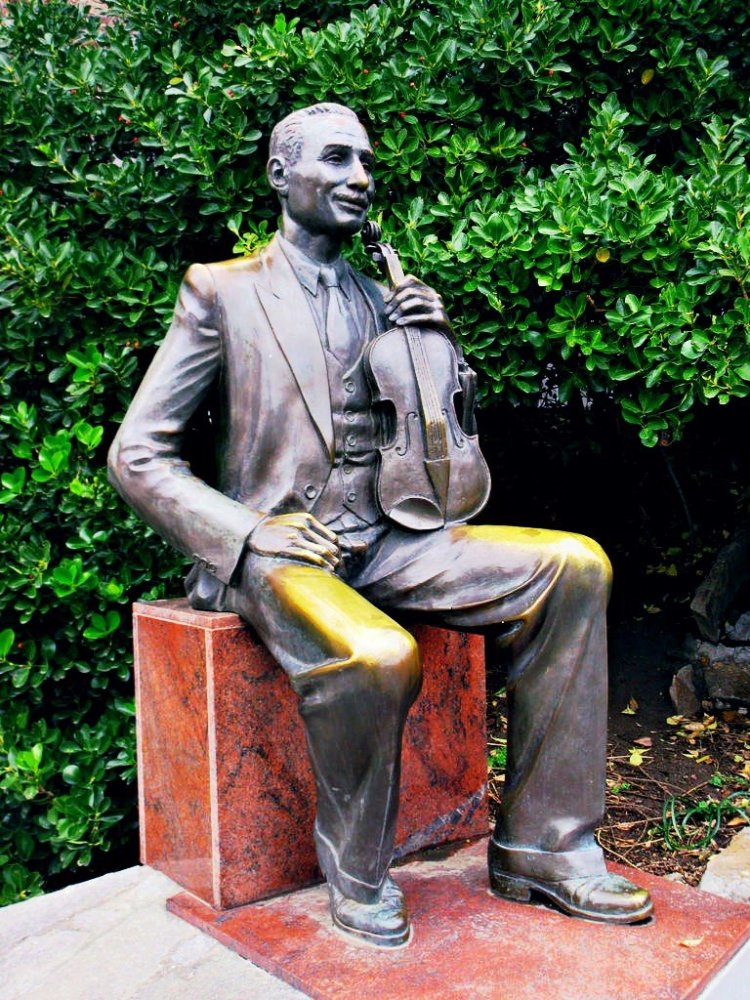

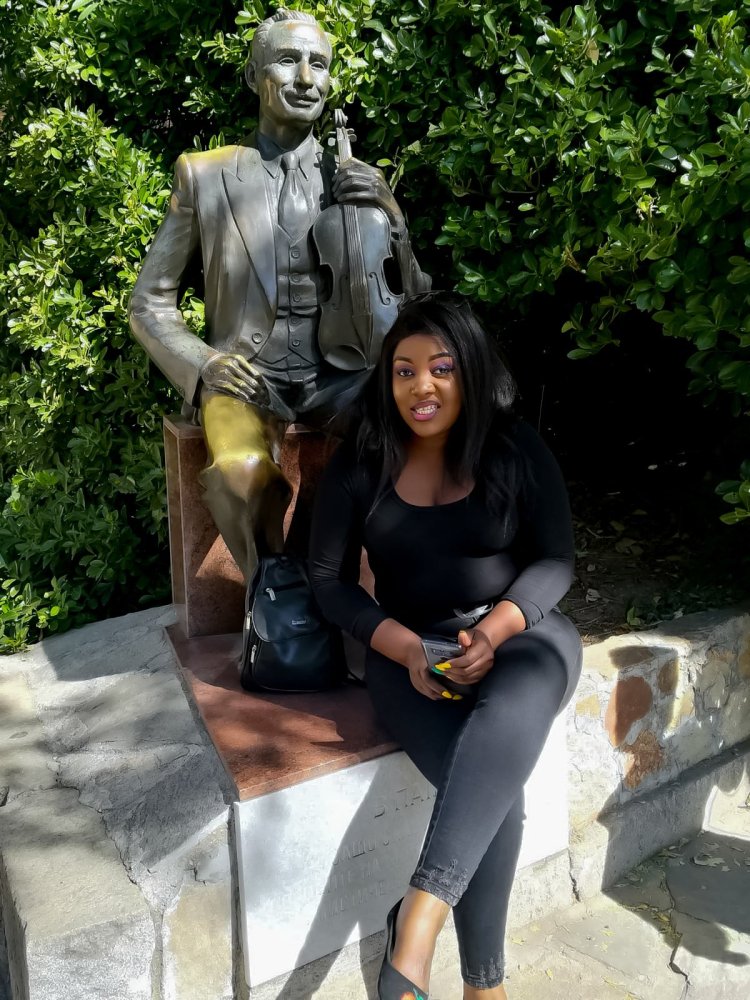
Another Beautiful Artist Statue


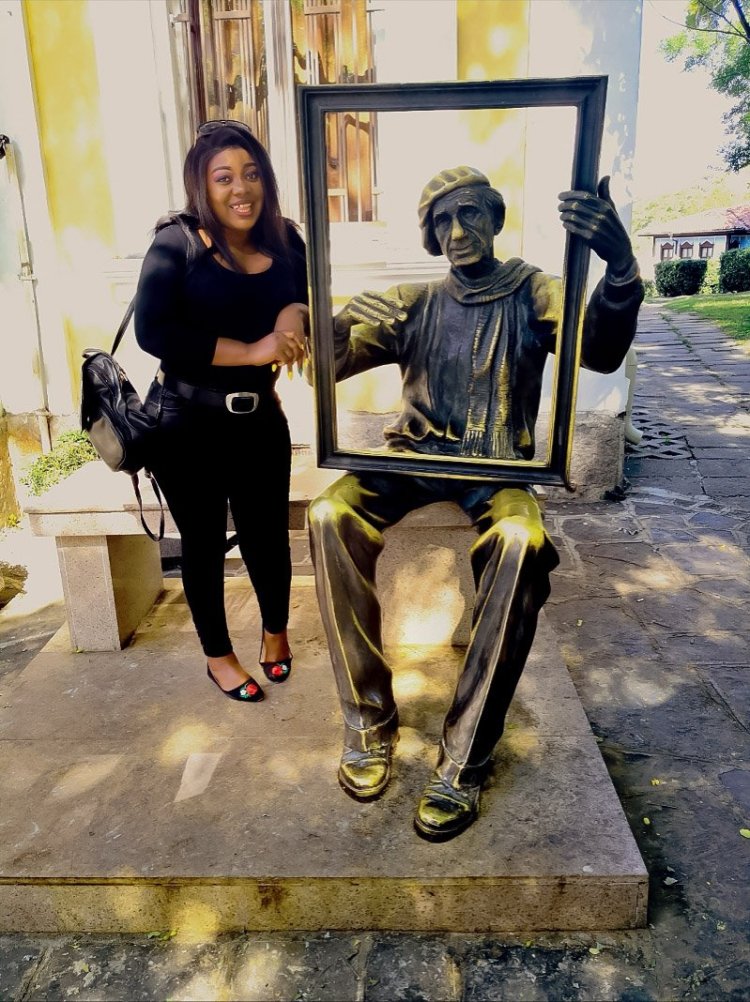

Here is another part of Plovdiv Town which I believe is where the new town start. How amazing that the old town and New Town combined together.

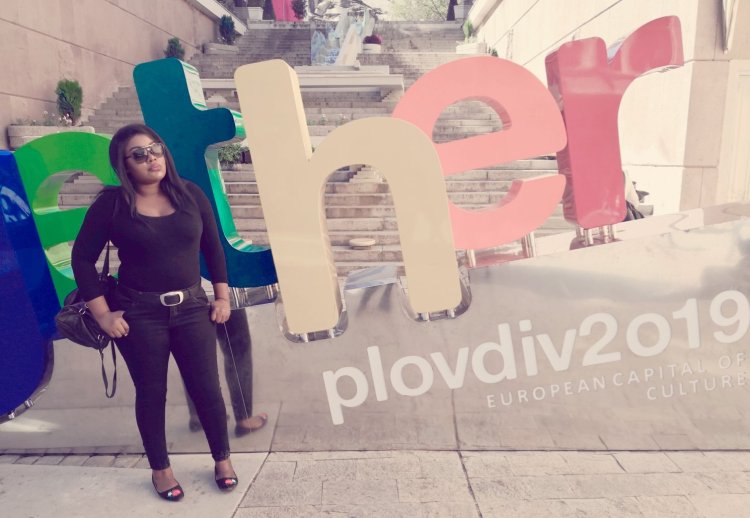
Plovdiv was selected as European Capital of Culture of 2019.
Plovdiv is the first Bulgarian city chosen to be European Capital of Culture. In 2019, twenty years after the city was a host of the Month of Culture in 1999, it will celebrate the most prestigious cultural initiative of the European Union.


European Capital of Culture is a unique project for Bulgaria which provides new opportunities for the development of the potential of the city and new international visibility and a perspective on Bulgarian culture as a whole. The programme of Plovdiv European Capital of Culture 2019 also includes activities and events in the South Central Region of Bulgaria.
The beautiful Italian city of Matera, together with Plovdiv, has been chosen as the twin European Capital of Culture for 2019.





The two cities are collaborating actively and have common projects and initiatives. For 2019 Matera also represents the region of Basilicata.





It was really a great experience am glad I visited Plovdiv.
Thank you for stopping by, have a lovely blessed day

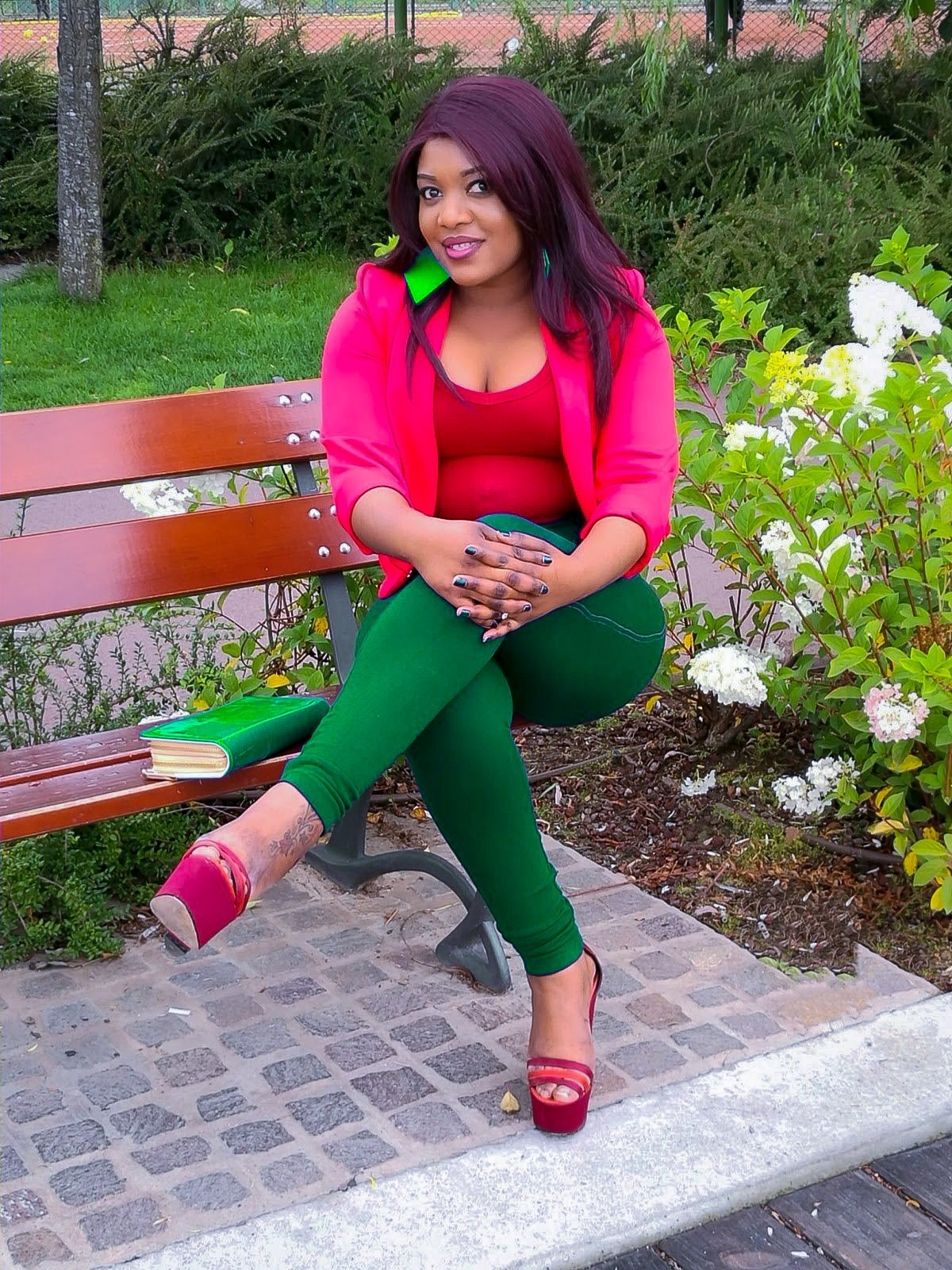



Hi Tashnee, I have nominated you for the blogger recognition award. Please do checkout
https://inspiresn.com/2018/11/01/blogger-recognition-award/
LikeLiked by 1 person
Wow thank you so much dear 😍😘🤗
LikeLiked by 1 person
You are very welcome!
LikeLiked by 1 person
Great captures, the Roman theatre is awesome .Wonderful to visit Plovdiv, Bulgaria through this post!
LikeLiked by 1 person
Thank you for sharing so much interesting information and Wonderful pictures!
I have nominated you for the Awesome Impact Award. Participation is voluntary. You can find details here:
https://inaloveworld.wordpress.com/2018/10/22/the-awesome-impact-award/
All the best to you,
Manuela
LikeLiked by 1 person
Wow thank you so much dear, I will definitely check it out and your welcome
LikeLiked by 1 person
You are more than welcome! 🙂
LikeLiked by 1 person
Oh wow! What a beautiful, interesting place. I had no idea. Thanks for sharing.
LikeLiked by 1 person
Your welcome dear and thank you for visiting
LikeLiked by 1 person
Thank you for taking me (remotely) to a new and interesting place. An adventure! You took some really great pictures!
LikeLiked by 1 person
Thank you Saymber and your welcome
LikeLiked by 1 person
Beautiful I see you had a great time my dear, I love love the photos 😍
LikeLiked by 2 people
Thank you dear. I really did my dear, it was a new experience. Especially touring around with my mother in law.
LikeLike
☺ You’re blessed 😍
LikeLiked by 1 person
Amen
LikeLike
Interesting!
LikeLiked by 1 person
Thank you
LikeLiked by 1 person
What a fantastic adventure! Lovely share! You’re a marvelous docent!
LikeLiked by 2 people
Thank you so much, and thank you for stopping by
LikeLiked by 1 person
wonderful photos! 🙂
LikeLiked by 2 people
Thank you Jim
LikeLike
Nice photos. What kind of camera do you use?
LikeLiked by 2 people
Thank you dear, I am using my Huawei Mate10 Pro
LikeLiked by 1 person